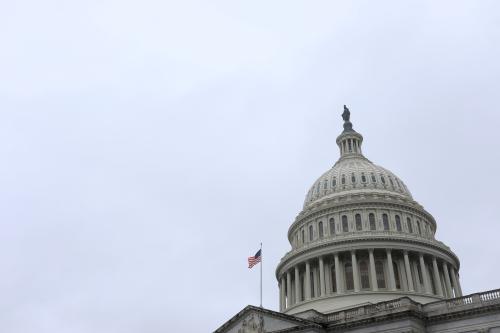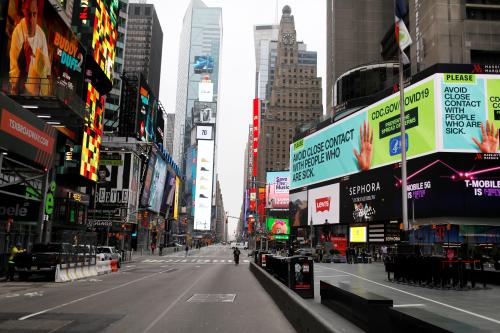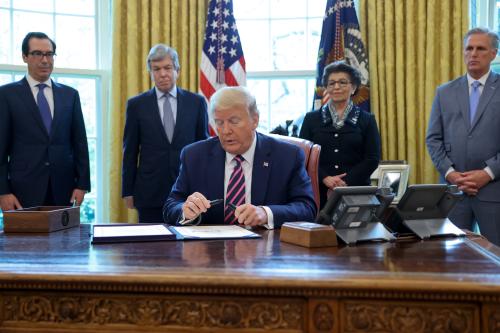Amid the finger-pointing and blame-throwing about the mess that is the Paycheck Protection Program, the U.S. Treasury and Small Business Administration seem to have forgotten why Congress enacted it: so businesses would keep people on payroll instead of laying them off.
The PPP idea is simple: rather than have businesses lay off tens of millions of people until the COVID shutdowns are over and customers come back, the federal government will pay businesses to keep them on payroll for a couple of months whether they work or not. The alternative is worse: joblessness, hopelessness — and governments paying hundreds of billions of dollars in unemployment benefits anyway.
Unfortunately, Congress chose to run what should be a grant program as a “loan.” If PPP money is used for payroll (with some for rent and utilities), the “loan” is forgiven and the money never comes back to Uncle Sam. But the loan design means PPP is slower and more complicated, that it goes through banks instead of IRS computers, and that Congress had to set a limit on how much could be used. And it means that businesses aren’t actually required to use the money for payroll at all.
Trying to make a bad design work quickly, Treasury and SBA made mistakes: they didn’t allocate the money based on need; it was “first come, first served.” They encouraged banks to favor their existing customers, and they didn’t limit the size of loans. As a result of what one writer called the “hunger games scrum,” bigger, faster banks got large loans for their larger customers. Within two weeks, PPP had run through the money and more than a million small businesses were empty-handed and angry. Congress realized that much more would be needed and, several weeks later, authorized another $310 billion. But, by then, anger and mismanagement changed PPP in the public mind: what started as compassion became a fight over money.
The focus turned from covering paychecks to “who gets a loan.” The poster child for this came when it was revealed that Shake Shack, Potbelly, and Ruth’s Chris Steak House had entirely legally received PPP loans – under the law franchises and their individual restaurants qualify. Although other companies received much larger PPP loans, these are public companies and there was public outrage. To avoid customer anger, those companies agreed to return the funds (though many others did not). Lost in the controversy was that they were planning to use the money as the law intended – to keep thousands on payroll even though there were almost no customers.
Ignoring both the law’s intent and its actual requirements, Treasury and SBA announced that companies who had access to capital weren’t welcome into PPP and went so far as to threaten investigations and criminal penalties. That the PPP money could have kept those people on payroll wasn’t even mentioned.
What should be done?
Obviously, Congress can and should provide enough funds to meet the real need. Almost no one believes that even $650 billion is sufficient even to cover the three months of support the law intended. But both Congress and Treasury/SBA can and should do more.
Members of Congress of both houses and both parties, from conservatives such as Senator Josh Hawley (R-MO) to the leader of the House Progressive Caucus, Pramila Jayapal (D-WA) have suggested converting the program from loans to automatic payments. Rather than begging with banks and fighting over loans, businesses could get reimbursed automatically through the same system that collects payroll taxes: payroll providers and the IRS. This is the approach already operating in the UK, Germany, and Denmark – and it’s like the one we’re already using to send $1,200 COVID checks to over 100 million Americans.
If, however, Congress doesn’t want redesign paycheck protection, they still could make sure that the Paycheck Protection Program actually protects paychecks by allowing the funds to be used for payroll anytime within the next six months (versus only eight weeks), and by raising the interest rate on businesses that don’t use at least 75% for payroll to the SBA’s normal disaster loan rate.
For their part, Treasury and SBA could – in addition to making sure that the smallest businesses get priority instead of being sent to the back of the line – also return the program’s focus to preserving paychecks. They could, for example, say that companies who use 75% of the loan for paychecks will be considered in good faith even if some of those paychecks go out after the two months envisioned in the law. They could also announce that they will focus their audits on companies that don’t use the program for paychecks.
Thus far the Paycheck Protection Program has not lived up to our hopes, but there’s still time to get this right – and the nation cannot afford to abandon millions of small businesses that are shuttered and tens of millions who are losing their jobs through no fault of their own. Let’s stop acting like stingy bankers and more like the compassionate neighbors and shopkeepers we really are.
The Brookings Institution is committed to quality, independence, and impact.
We are supported by a diverse array of funders. In line with our values and policies, each Brookings publication represents the sole views of its author(s).







Commentary
Op-edHow to fix the Paycheck Protection Program: Make sure it actually protects paychecks
May 4, 2020